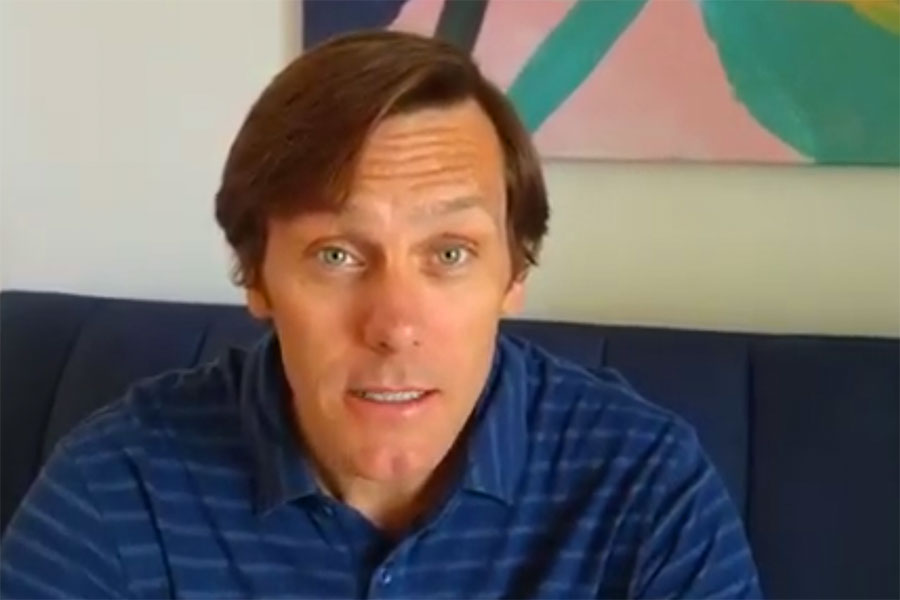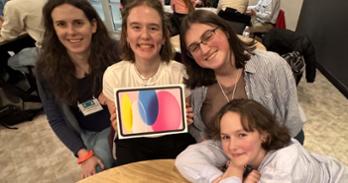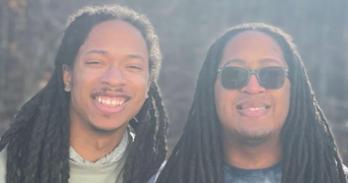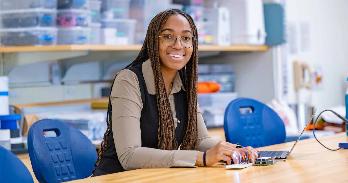Contact Us
Contact:
Ashby, Riya
Don Myers Technology & Innovation Building, Room 206A on a map
Physics 4400 Massachusetts Avenue NW Washington, DC 20016-8079 United StatesDepartment of Physics
Welcome to the Physics Department at American University! Our research labs and facilities include the Institute for Integrated Space Science and Technology (ISSTI), Design and Build Lab (DaBL), and DC Space Grant Consortium.
Recent Grants, Awards, and Research
-
Students Eli Rockenbeck won the “Piers J. Sellers Award for Interdisciplinary Science” from the organizers of a poster presentation event at NASA Goddard.
-
Students Madeleine Bartin, Evelyn Bristol, and Ally Friedman won first place for their presentation at the 10th annual Optical Sciences Winter School & Workshop at the University of Arizona.
-
Nathaniel Roth received a $21,325 grant from the Space Telescope Science Institute for “Composition of an Interstellar Object — Unique Insights into Protoplanetary Disk Midplane Chemistry.” He also received a $75,645 grant from the National Science Foundation for “Collaborative Research: Elucidating the Composition of our Solar System's Most Primitive Materials — Comprehensive Chemical Analysis of a Halley-Type Comet.”
-
Frederick Bruhweiler received supplemental funding of $34,000 and $7,000 (new total: $251,725) from NASA for “Development of the MeDDEA Instrument for the PADRE CubeSat Mission to Observe the Sun In High-Energy X-rays” and supplemental funding of $25,000 (new total: $317,869.17) for “Continued Development of IR & Visible Spectrometer and Imaging Arrays for Ground-based & Space-borne Planetary Observations.”
-
Boncho Benev received a $330,562 grant from the NSF for “Transformative studies of cometary volatiles in the era of modern near-infrared spectrographs.”
-
Frederick Bruhweiler received supplemental funding of $40,000 (new total: $417,924.82) from NASA for “Continued Development of IR & Visible Spectrometer and Imaging Arrays for Ground-based & Space-borne Planetary Observations.”
-
Philip Johnson received a $33,816 grant from NASA for “Improving Photochemical Models for Cold and Hot Planetary Atmospheres using New Ab Initio Reaction Rate Coefficients” and supplemental funding of $86,057 (new total: 244,894.17) from NASA for “Revealing Primitive Material Preserved in Solar System Small Bodies.”
-
Will Barnes received from NASA a $14,576 grant for “Modeling Energy Release and Beam Heating in NuSTAR Hard X-Ray Coronal Transients”; a $21,864 grant for “Enhancing Consistency and Discoverability across the Sunpy Ecosystem”; $18,020 for “The Euv Snapshot Imaging Spectrograph (Esis) II”; and $30,000 for “The CHIANTI Atomic Database — Essential Infrastructure for Heliophysics.”
-
Nathaniel Roth received supplemental funding of $14,514 from the Space Telescope Science Institute for project “An Empirical Calibration of the NIRSpec IFU Point Spread Function to Enable High Contrast”; $18,854 grant from the National Radio Astronomy Observatory for "Subsurface Thermal Photometry of NEAs: Characterizing the Regolith”; a $76,576 grant from NASA for "Comet Chemistry Beyond the H2O Sublimation Zone: Interferometric Imaging and Spectroscopy of Distant Comets”; and a $14,043 grant from the Space Telescope Science Institute for “Quantitative Study on the Search for Sulfur-bearing Molecular Ice Signatures.”
-
Will Barnes received supplemental funding of $87,461 (new total: $147,461) from NASA for the project “How Are Active Region Properties and Heating Connected?”
-
Nathan Harshman received supplemental funding of $50,000 from the NASA for the project “District of Columbia Space Grant Consortium Budget Proposal for National Space Grant College and Fellowship Program: Opportunities in NASA STEM FY 2020-2024.” Ealier this year he received supplemental funding of $860,000 from NASA" for the project.
-
Philip Johnson received supplemental funding of $58,288.28 (new total: $405,044) from NASA for “Interpreting Cassini CIRS Data with a Photochemical Model using Improved ab initio Reaction Rate Coefficients.” He also received supplemental funding of $46,340.17 (new total: $158,837.17) from NASA for “Revealing Primitive Material Preserved in Solar System Small Bodies.”
-
Vladimir Airapetian received supplemental funding of $35,642 from the Space Telescope Science Institute for the project "An X-ray through Radio Exo-Space Weather Campaign to Study the Infant Sun DS Tuc.”
-
Gregory Harry received a $139,844 grant from NSF for "Collaborative Research: Development and Characterization of AlGaAs Coatings for Gravitational-wave Detectors.”
Philip Johnson received supplemental funding of $88,416 (new total: $165,594.75) from NASA for "Spectroscopic Investigations of Processed Planetary and Astrophysical Ices with the Sublimation Laboratory Ice Millimeter/submillimeter Experiment.” He also received supplemental funding of $119,759.60 (new total: $1,158,864.60) from NASA for the project "Remote Sensing of Planetary Atmospheres in the Solar System and Beyond."
Fall Physics Events
-
Abril Sahade & Cecilia MacCormack,
"The Challenging Life of Coronal Mass Ejections:
Multi-View Analysis and Numerical Simulations"
October 8, 2:30 | DMTI 213 | Snacks providedCoronal Mass Ejections (CMEs) are massive expulsions of plasma and magnetic fields from the Sun into interplanetary space. These phenomena are responsible for the major disturbances in space weather and, therefore, characterizing its potential impact is critical. Understanding how complex the evolution of CMEs is, from its eruption through its interaction with the ambient, is still a big challenge due to both theoretical and observational limitations. As AU postdoctoral fellows Sahade and MacCormack explain, this study aims to explain the structures identified in the observations through a multi-viewpoint analysis that traces the CME’s evolution from its origin.
-
Professor Mark Hannum, "Quantum Computing: A New Hope, or Just Hype?"
October 1, 2:30 | DMTI 213 | Snacks providedQuantum computing promises revolutionary breakthroughs—but how much of that promise is real, and how much is just well-branded optimism? In this talk, we’ll explore the weird and wonderful world of qubits—what they are, how they’re built, and why they’re so maddeningly fragile. We’ll look at emerging use cases from the Quantum Global Industry Challenge, unpack a concrete example with Grover’s algorithm, and discuss realistic near-term advances in quantum hardware and software.
60 Seconds on Preparing for the Future Space Industry
Prof Nate Harshman connects students and faculty of diverse backgrounds and skill sets with NASA's space missions through the DC Space Grant Consortium.
Read more about cosmology, AU physics—and whimsy in From the Subatomic to the Cosmological: AU’s Professor Nathan Harshman.
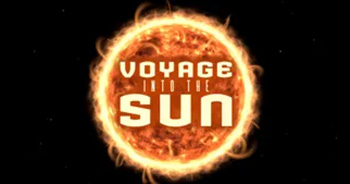
Voyage into the Sun
Check out Prof. Silvina Guidoni talking about solar physics in the Voyage to the Sun documentary!
